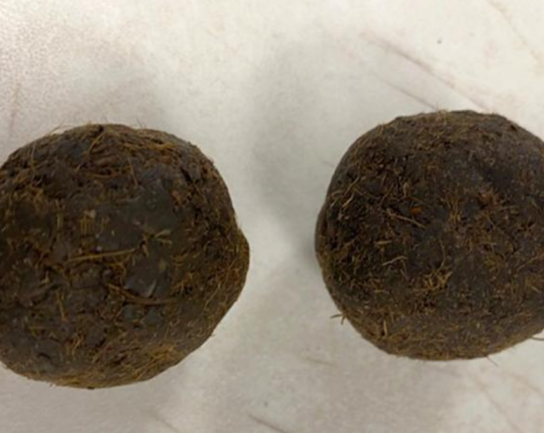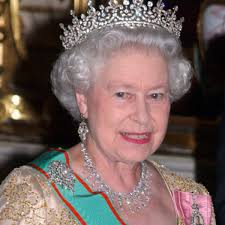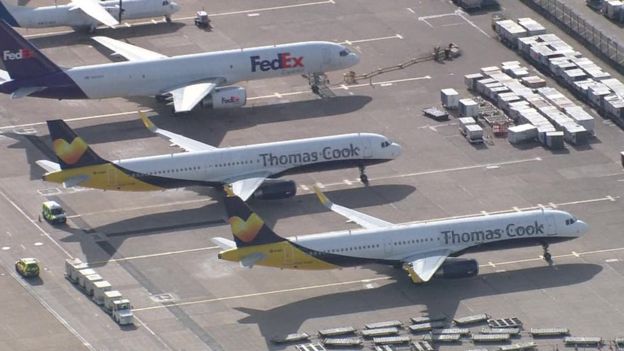Israel crush: Netanyahu promises inquiry as first victims are buried
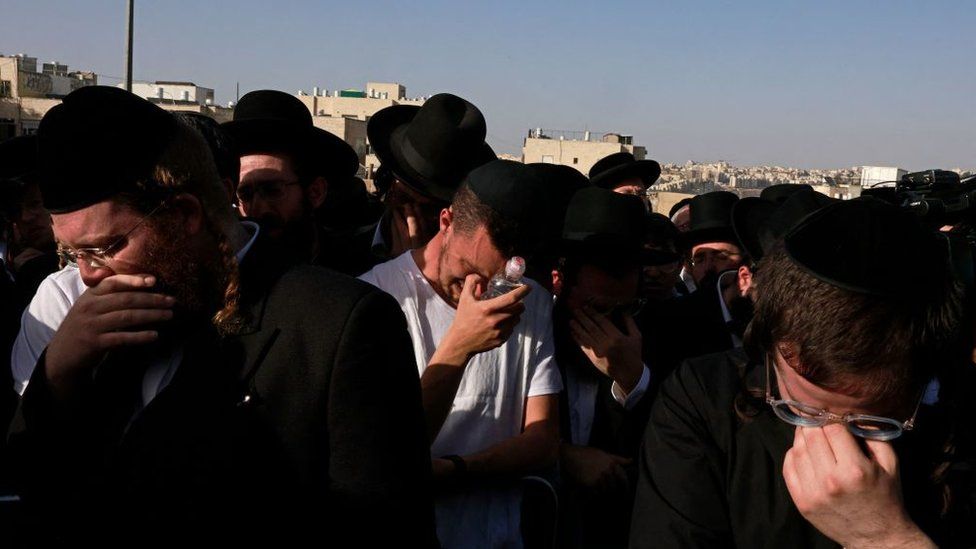
Some 150 people were also injured at the Lag B’Omer festival, near Mount Meron, when people became trapped in an overcrowded passageway.
Funerals were allowed to take place for victims who were positively identified.
Prime Minister Benjamin Netanyahu promised that an inquiry would ensure such a tragedy did not happen again.
Visiting the scene, he said it was one of the worst peacetime disasters the country had known.
One survivor who gave his name as David told Ynet news it had felt like a human wave had broken: “Our bodies were swept along by themselves. People were thrown up in the air – others were crushed on the ground.”
Medics struggled to reach the injured in the ensuing chaos.
Those who died are believed to be predominantly men or boys from the ultra-Orthodox community as the crush at the largely gender-segregated event apparently happened in one of the men’s sections.
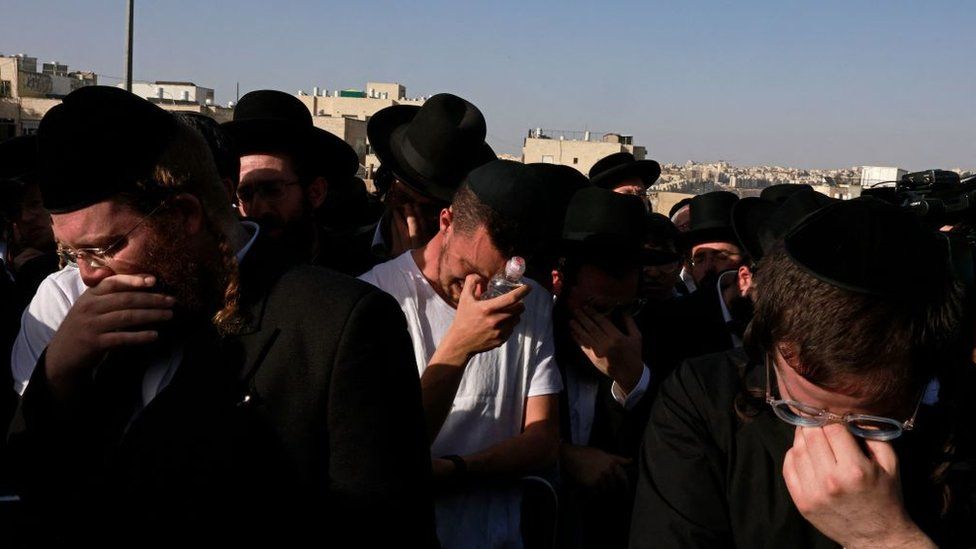 IMAGE COPYRIGHTAFP
IMAGE COPYRIGHTAFPSome victims are believed to be foreign nationals. Israeli airline El Al has offered to assist family members of victims living abroad who wish to attend their loved ones’ funerals in Israel.
Sunday has been declared a national day of mourning.
What do we know about the victims?
Bodies of the dead were taken to the Greenberg Institute of Forensic Medicine in Tel Aviv, which had identified 32 before the process was halted for 24 hours on Friday evening for observance of the Sabbath.
One of the first funerals to be reported was that of Rabbi Elazar Goldberg, who was in his late thirties.
Mourners in Jerusalem prayed, some wept, as the body covered in a white sheet was moved into the back of a vehicle ahead of burial, Reuters news agency reports.
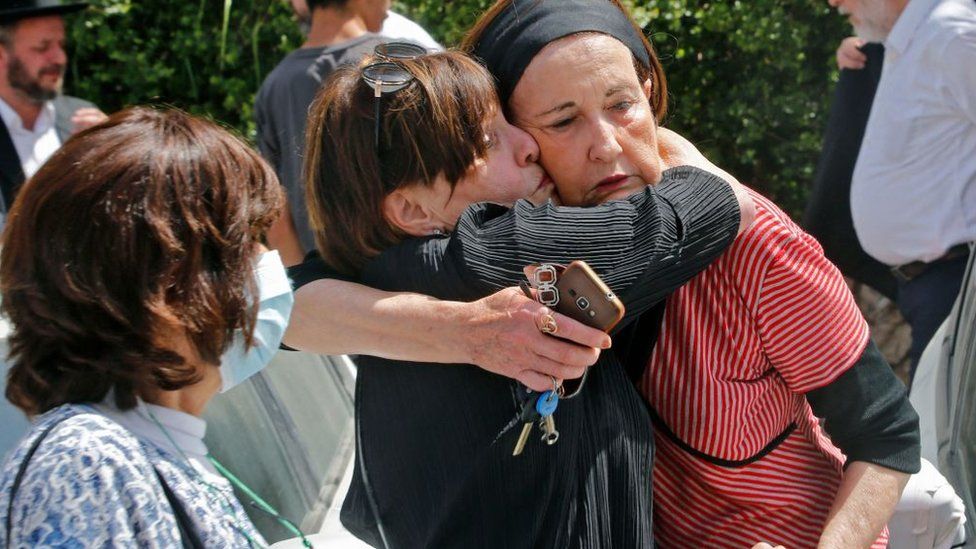 IMAGE COPYRIGHTAFP
IMAGE COPYRIGHTAFP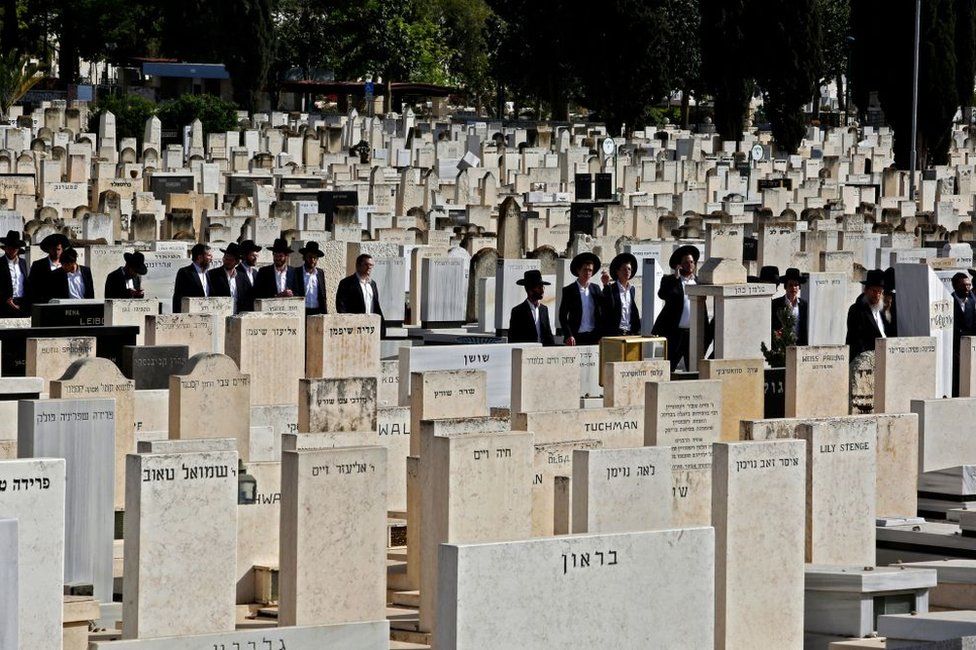 IMAGE COPYRIGHTAFP
IMAGE COPYRIGHTAFPTwo of the youngest victims were brothers Moshe Natan Englander, 14, and Yehoshua Englander, 9, from Jerusalem.
At least two of the dead are US citizens from New York, Congressman Mondaire Jones confirmed in a tweet.
Israeli President Reuven Rivlin lit 45 candles on Friday afternoon to commemorate the dead, the Jerusalem Post reports.
“This is the time to hug the families and to help them find their loved ones – to cry together,” he said. “This is a hard and painful day. This tragedy is heartbreaking.”
How did the disaster happen?
The site includes several large gathering grounds with open-air stands and stages, connected by a network of paths. It was along one of those paths where witnesses said the crush of people began at around 01:00 local time (22:00 GMT Thursday).
Some witnesses said the incident had begun when police closed the passageway, said to be 3m (10ft) wide. Police sources told Haaretz newspaper some people had slipped on steps, causing dozens more to fall over. This was not officially confirmed.
An injured man lying on a hospital bed said a line of people in the front of the surging crowd had simply collapsed.
 IMAGE COPYRIGHTREUTERS
IMAGE COPYRIGHTREUTERS“A pyramid of one on top of another was formed,” the unnamed man was quoted as saying by Reuters news agency. “People were piling up one on top of the other. I was in the second row. The people in the first row – I saw people die in front of my eyes.”
Dov Maisel, director of operations for volunteer-based emergency services organisation United Hatzalah, told the BBC he had never witnessed such a scene in his 30-year career.
“It felt like a surreal scene where we had over 20 people undergoing CPR by our teams, with limited ability to evacuate from the scene, simply because the place was too overwhelmed with people,” he said.
Witnesses say a police barricade prevented people from leaving the crowded area.

Israel’s state watchdog, the State Comptroller’s office, issued warnings in 2008 and 2011 of the risk of a disaster.
Special danger was posed by access roads and paths which “are narrow and not appropriate to accommodate the hundreds of thousands of people who visit the site”, the office was quoted as saying by the New York Times.
What was different this year was that bonfire areas were partitioned off as a Covid-19 precaution and this may have created unexpected choke-points for foot traffic, Reuters reports, quoting Israeli media.
Thousands of police officers closed down the event after the crush before helping evacuate attendees.
How did the police respond?
Investigators will look into whether there was any police misconduct, the justice ministry said.
Mr Netanyahu promised a “serious” investigation that “would ensure this kind of disaster never happens again”.
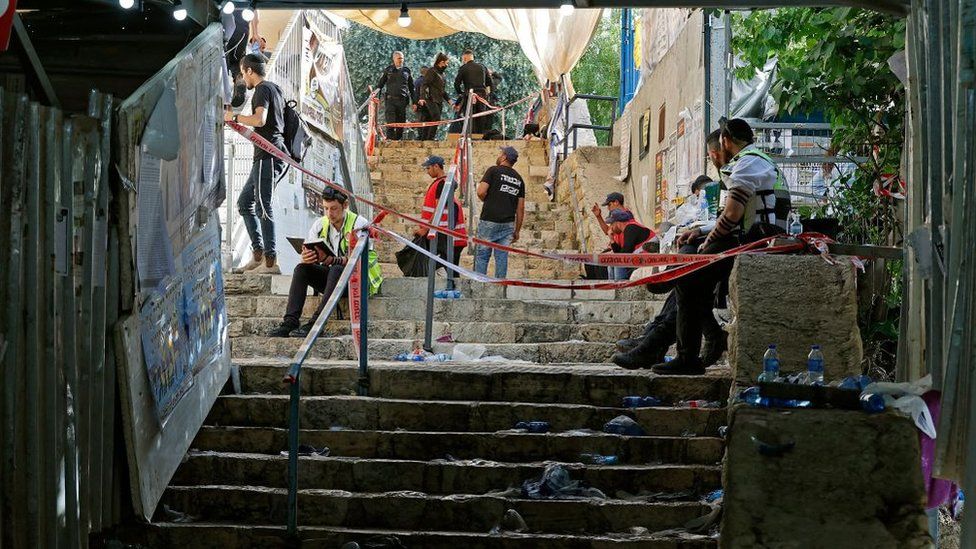 IMAGE COPYRIGHTAFP
IMAGE COPYRIGHTAFPRegional police chief Shimon Lavi told reporters at the scene he took upon himself “the overall responsibility, for good and for bad” and was “ready for every inspection”.
He later told AFP news agency his officers had done all they could on a “tragic night”. Other police officials told local media people had slipped in the walkway and the crush had been “out of their control”.
An unnamed police source told Haaretz the incident could not have been prevented and the police were not to blame.
US President Joe Biden called Prime Minister Netanyahu to offer his condolences. UK Prime Minister Boris Johnson said his thoughts were with “the Israeli people and those who have lost loved ones in this tragedy” and German Chancellor Angela and offered her “heartfelt sympathies”.
At the disaster site, men come in their dozens. Some pray. Others stand in groups, exchange short words and point to where tragedy unfolded.
I walk down the ramp from the top of the slope where the crowd swelled. It is made of metal, with no steps, and eyewitness say it was wet and slippery.
Then the narrow passageway turns hard to the right and there are steep steps. One man points down them. “The police, they put barriers there!” he says, anger rising in his voice.
People say they could not get out as the crowd at the top, unaware, carried on coming.
Jewish pilgrims travel here in their hundreds of thousands for blessings at the shrine of a rabbi from antiquity. Instead, this year they met panic and a deadly crush.
And now this holy site witnesses an unplanned, mass evacuation. The festival was cancelled, and people are being bused out in their tens of thousands.
BBC.COM

